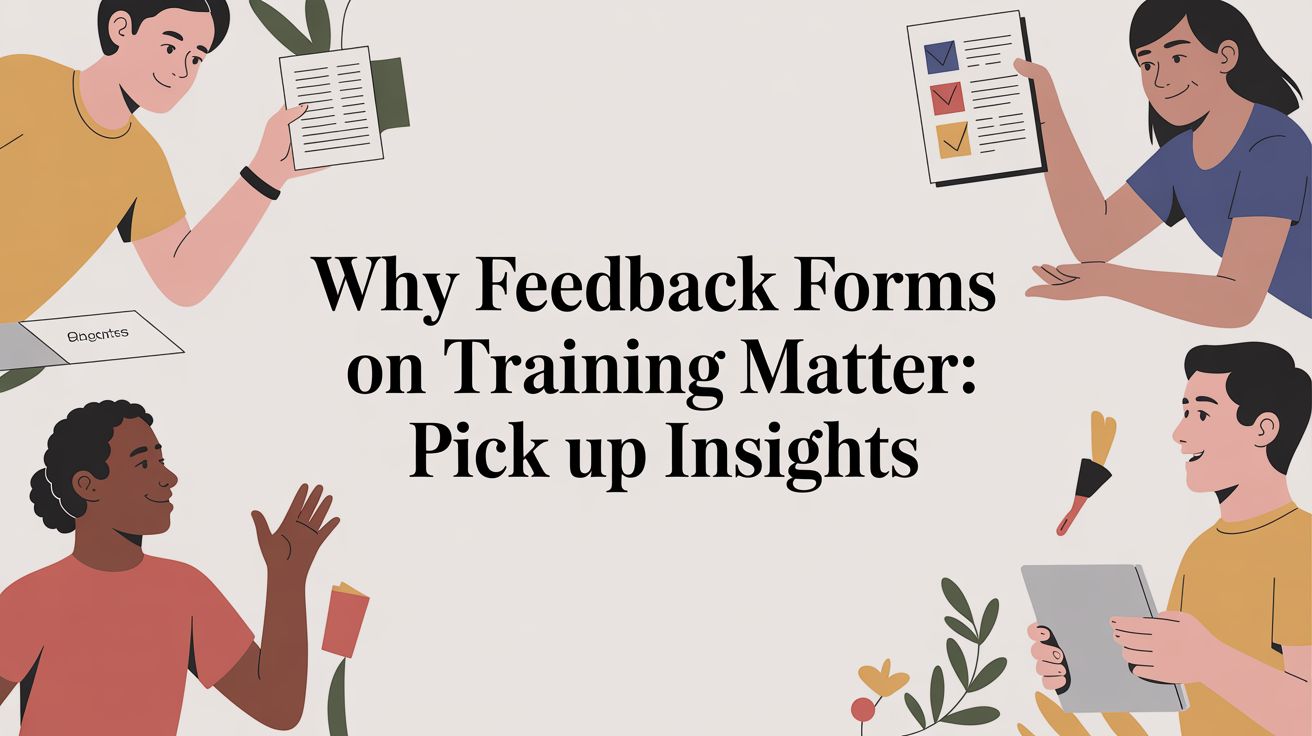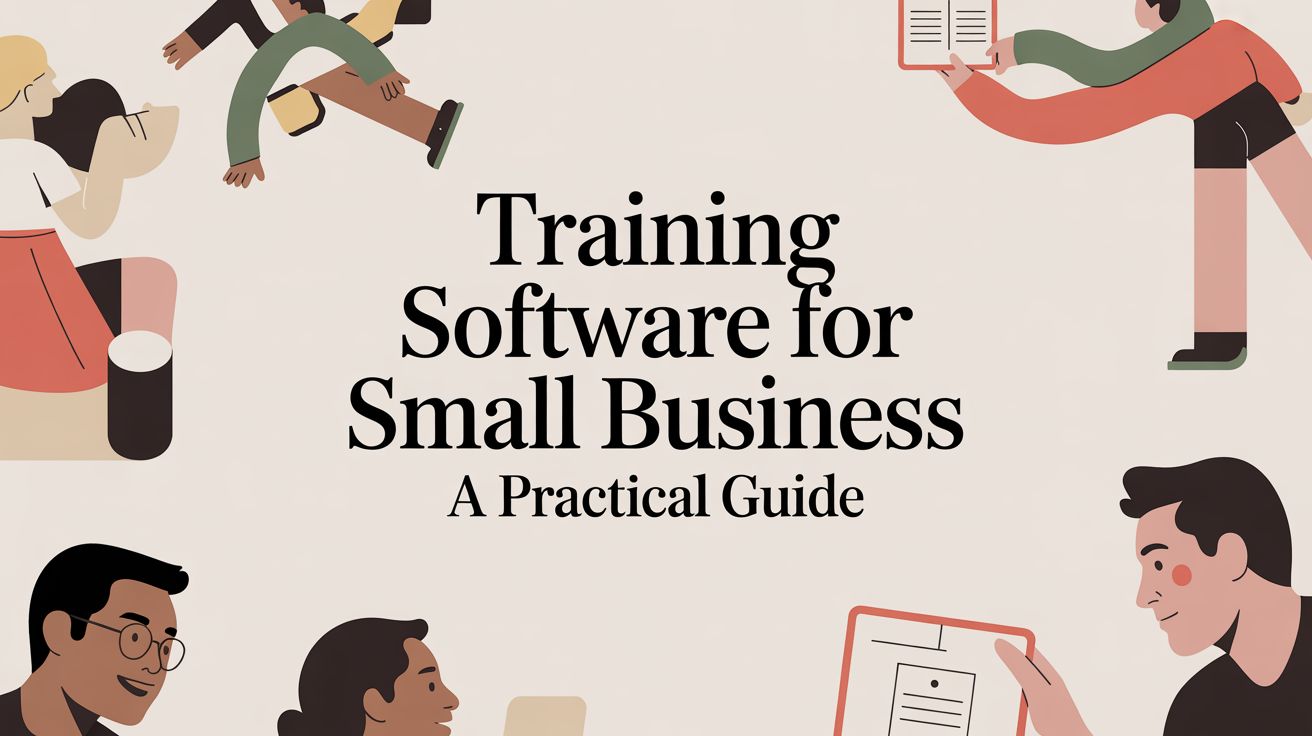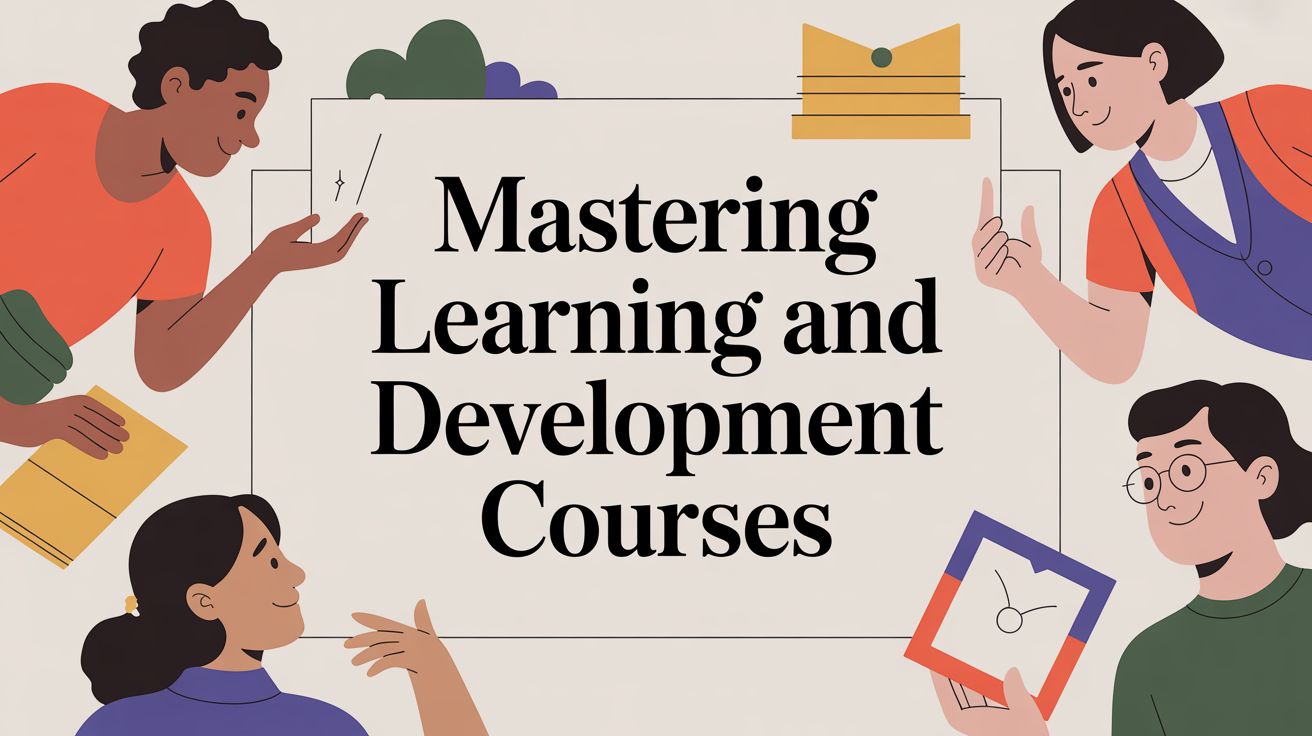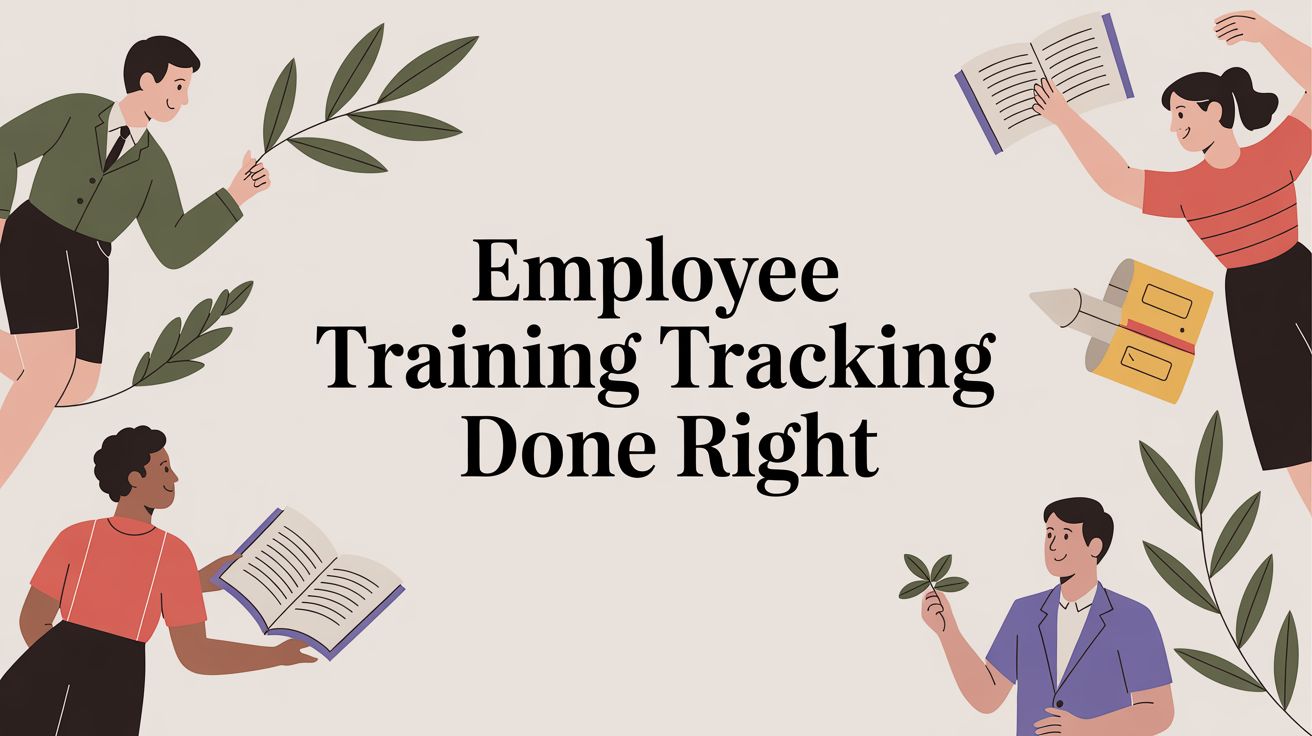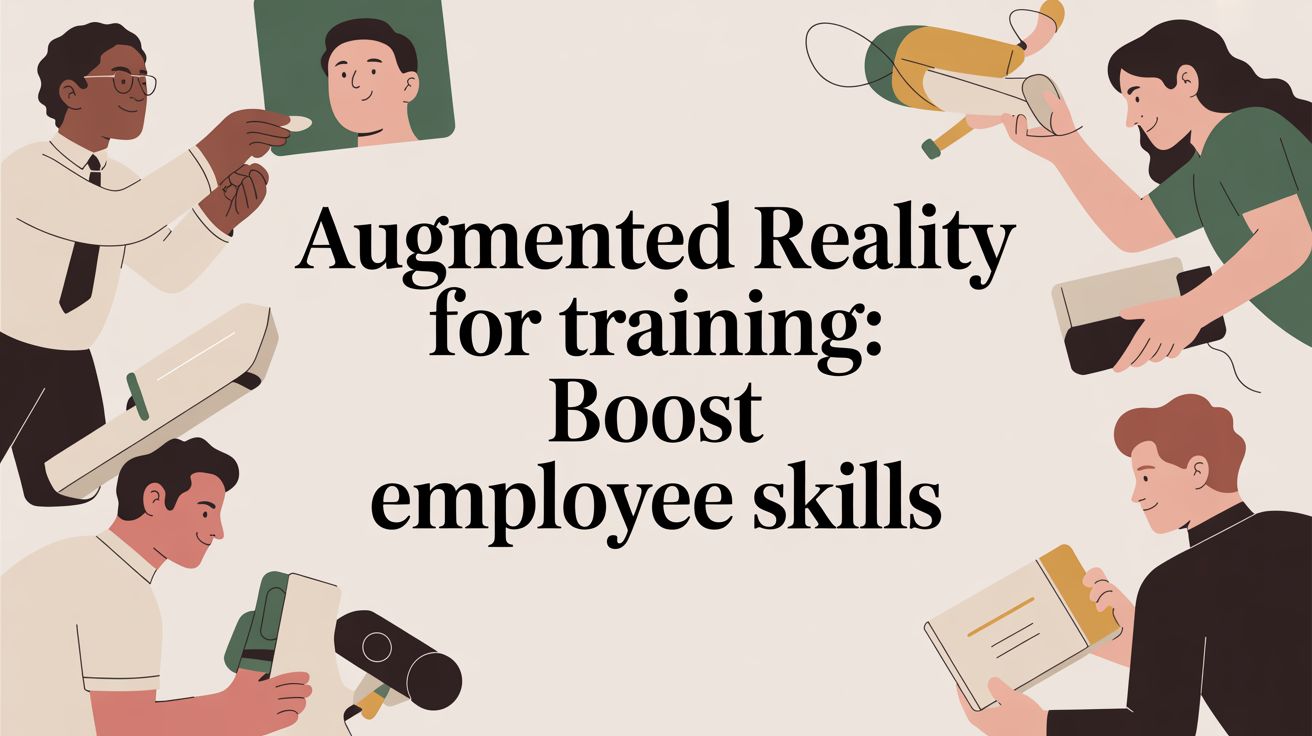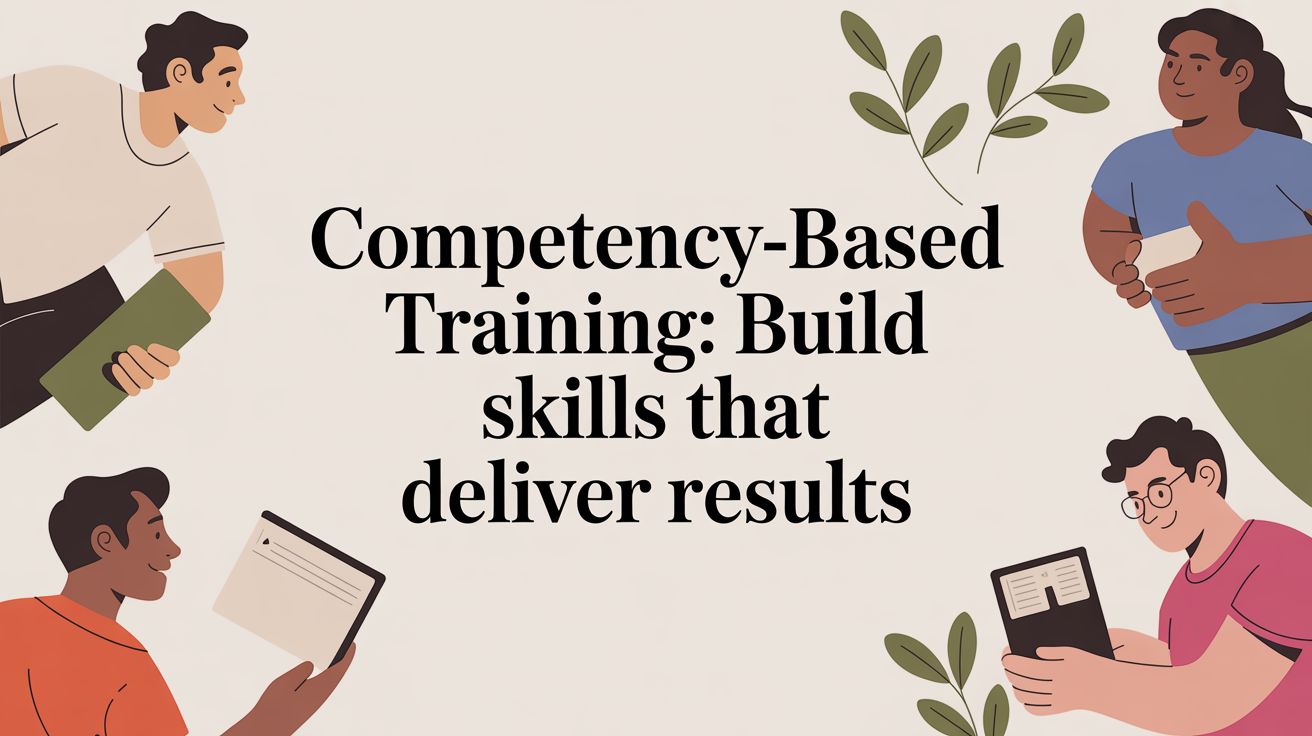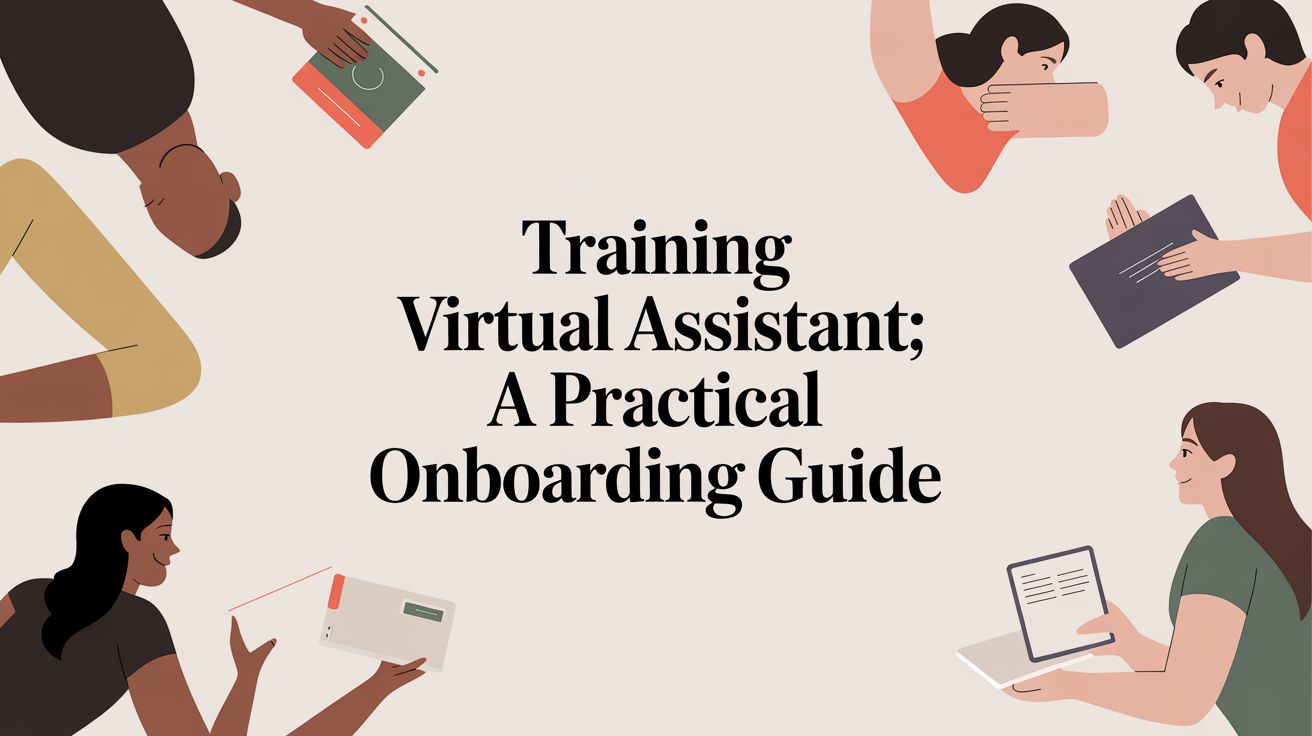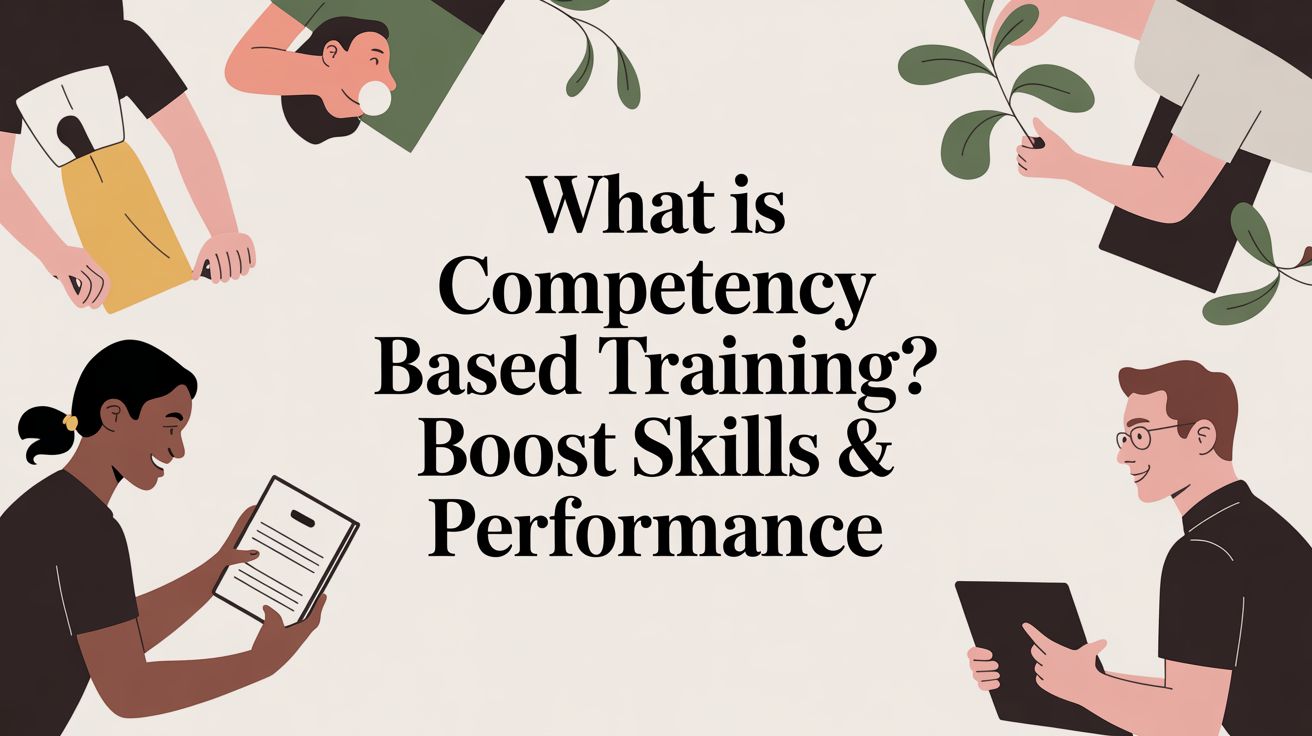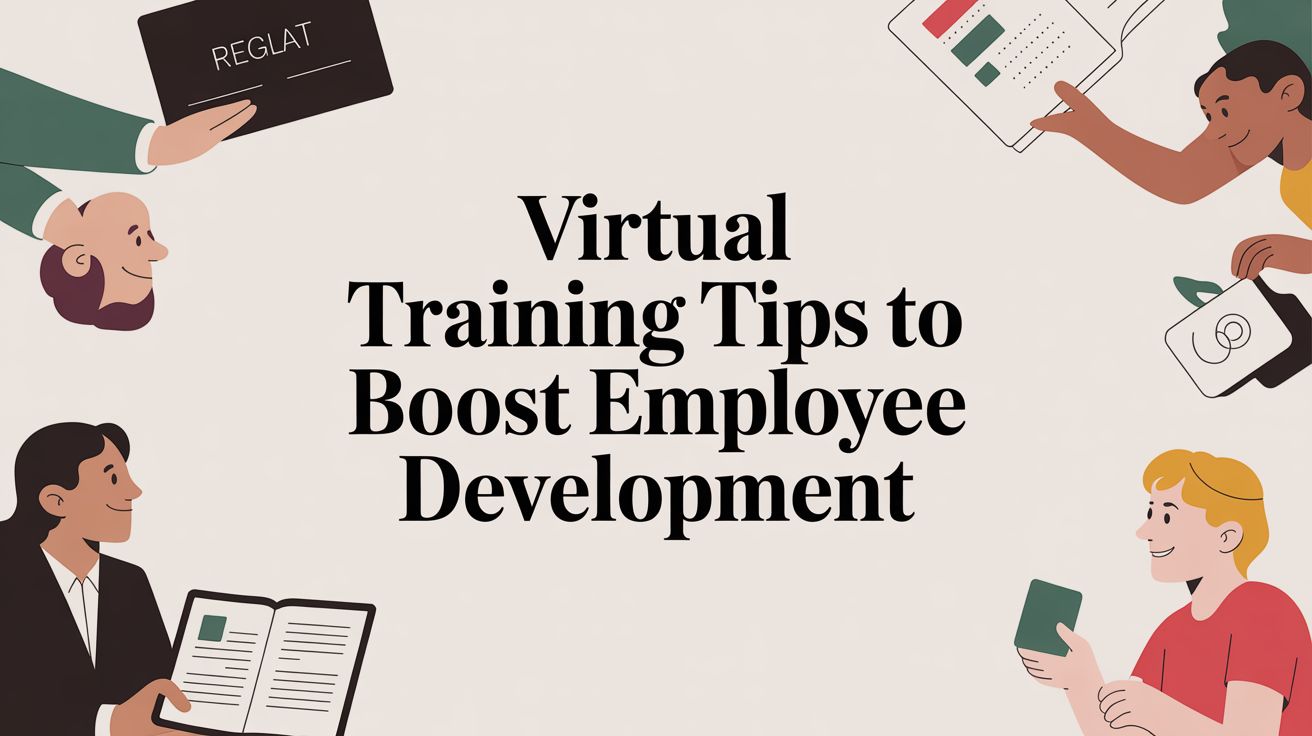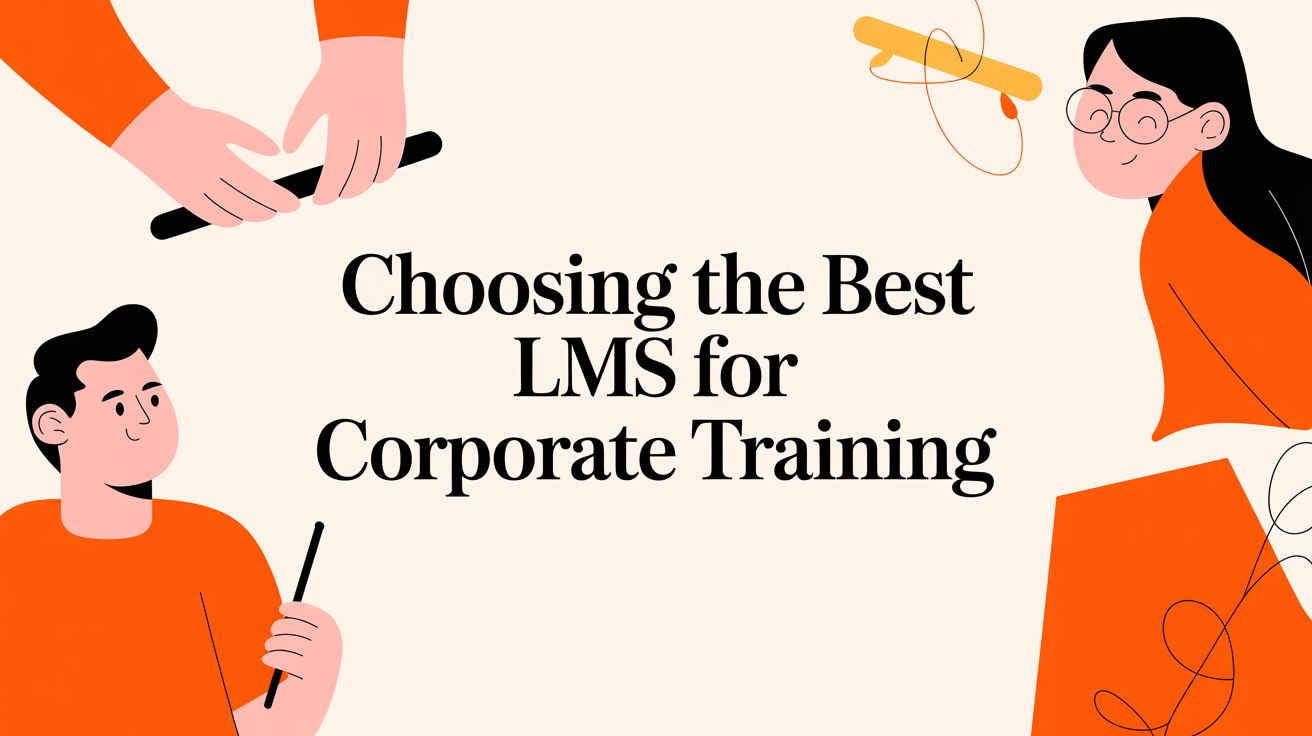Your Guide to Asynchronous Learning Platforms

Asynchronous learning platforms are digital spaces where education happens on your time, not on a set schedule. The best way to think about them is like a streaming service for knowledge. You get to press play on a lesson whenever and wherever it works for you, without being tied to a live class.
Understanding the Power of On-Demand Education
Picture a library that’s open 24/7. That's the core idea behind asynchronous learning platforms. They offer a place where learners can dive into course materials, watch recorded lectures, join discussion forums, and turn in assignments completely on their own timeline.
This is a world away from synchronous learning, which demands everyone show up at the same time, whether it's in a classroom or a live video call. To get a better handle on this, it’s worth exploring the difference between synchronous and asynchronous communication.
Let's quickly compare the two models side-by-side to make the distinction crystal clear.
Synchronous vs Asynchronous Learning at a Glance
| Feature | Synchronous Learning | Asynchronous Learning |
|---|---|---|
| Timing | Real-time, scheduled sessions | On-demand, self-paced |
| Interaction | Live, immediate feedback | Time-delayed (e.g., forums, email) |
| Pacing | Instructor-led, group pace | Learner-controlled, individual pace |
| Flexibility | Low; fixed schedule | High; access anytime, anywhere |
| Examples | Live webinars, virtual classrooms | Pre-recorded videos, online modules |
This table shows how asynchronous learning really puts the control back in the hands of the learner, which is a big reason for its growing popularity.
This kind of flexibility is fueling a major shift in both how companies train their teams and how universities teach their students. The global eLearning market, where these platforms are king, was valued at a staggering $399.3 billion in 2022 and is still climbing. The model’s appeal and ability to scale became undeniable when platforms like Coursera saw over 20 million new people sign up in 2021 alone.
Core Principles of Asynchronous Learning
When you strip it all down, this approach to education is built on a few simple but powerful ideas:
- Learner Autonomy: You are in the driver's seat. You decide when to speed up through familiar topics or slow down to really grasp a complex one.
- Location Independence: Learning isn't confined to a campus or office building anymore. This opens the door for anyone, anywhere in the world, to gain new skills.
- Time Flexibility: Juggling a job, family, and other commitments? No problem. You can fit learning in when you're most alert and available, whether that's early in the morning or late at night.
Key Takeaway: Asynchronous learning decouples teaching from learning. The instructor creates the material at one point, and the student engages with it at another. This creates an incredibly adaptable and personal educational experience.
It's important to note that these platforms are a specific type of Learning Management System (LMS), built from the ground up to deliver and track this kind of on-demand learning. This makes them different from a Training Management System (TMS) like Coursebricks, which is designed to manage the logistics of instructor-led live, hybrid, or face-to-face training events. If you're curious about the nuances, we have a guide that breaks down the different types of course management systems.
Why Organizations Are Embracing Asynchronous Learning
The move toward asynchronous learning platforms isn't just a passing fad. It’s a deliberate shift by organizations looking for smarter, more flexible ways to build skills. At its heart, this change is about one thing: empowerment.
When you untether learning from a rigid schedule, people can dive into the material when they're truly ready to focus. This is a massive win for global teams scattered across time zones or for employees balancing a hectic work schedule with their personal lives.
Unlocking Scalability and Cost-Efficiency
One of the biggest draws is the incredible potential to scale. A single, well-crafted asynchronous course can reach ten employees just as easily as it can reach ten thousand, without the logistical headaches of live training. It completely removes the old physical and administrative roadblocks.
This kind of scalability leads directly to major cost savings. Companies can slash the expenses that come with traditional instructor-led training, including:
- Travel and Accommodation: No more flying people in or booking hotel rooms.
- Venue Rentals: Forget about paying for conference rooms or off-site facilities.
- Printed Materials: Digital content is cheaper to produce and can be updated instantly.
It's no surprise that the global digital learning tools market is projected to hit USD 120.01 billion by 2032. The platforms that power this model, Learning Management Systems (LMS), are set to capture 24.7% of that market in 2025 alone, showing just how heavily companies and schools are investing here.
Fostering Deeper Knowledge Retention
Beyond the bottom-line benefits, asynchronous learning often helps people actually learn better. When learners are in the driver's seat, they can rewind a tricky section, pause to let a new idea sink in, or just take their time without feeling rushed by a group.
Tip: Don't think of an asynchronous platform as just a training expense. See it as a strategic investment in scaling up your talent while cutting down on operational costs.
This self-paced method encourages a deeper connection with the material, which helps with long-term memory. To make the most of this, smart organizations are adopting the best practices for online teaching to ensure their programs are just as engaging as they are convenient. By giving people control over their own learning journey, you end up with a more capable and confident team.
What to Look For in an Asynchronous Learning Platform
The best asynchronous learning platforms are far more than just digital filing cabinets where you dump course materials. They're complete learning environments, carefully designed to guide, engage, and check in on your learners. To spot the difference between a basic tool and a powerful learning partner, you need to know which features truly matter.
These core components are what turn passive content viewing into an active, measurable journey. Without them, even the best content can get lost in a disorganized platform that leaves learners feeling unmotivated and confused.
Robust Assessment and Analytics
An effective platform has to answer the most important question: "Is anyone actually learning?" This is where a solid assessment engine becomes non-negotiable. It needs to support everything from simple multiple-choice quizzes to complex, project-based assignments so you can accurately gauge how well people are retaining information.
Just as crucial are the analytics dashboards that make sense of all that data. For administrators, these tools are indispensable for tracking completion rates, spotting learners who might be falling behind, and proving the training program's return on investment (ROI). For learners, a clear dashboard shows them exactly how far they've come and what’s left to tackle.
Key Insight: A platform without good assessment and reporting is like a ship without a rudder. It might be moving, but you have no way of knowing if it's heading in the right direction or making any real progress.
Tools for Community and Collaboration
Learning on your own time doesn't have to mean learning alone. The top platforms weave in features that build a sense of community, turning what could be an isolated experience into a shared one. These tools are absolutely vital for keeping engagement high and encouraging people to solve problems together.
Look for a few key community-building features:
- Discussion Forums: Think of these as a virtual town square where learners can ask questions, share their "aha!" moments, and debate topics with peers and instructors across different time zones.
- Peer-to-Peer Feedback: Giving learners the tools to review each other's work not only deepens their own understanding but also introduces them to new perspectives.
- Group Project Spaces: A dedicated hub for collaborative work helps people build teamwork skills, even when they aren't online at the same time.
These features recreate the organic social interactions of a physical classroom, making the whole online experience feel more connected and supportive. You can find more great ideas for going beyond the lecture with interactive training methods to keep your audience hooked.
Engaging Content and Gamification
At the end of the day, the platform has to make learning feel satisfying. It starts with an intuitive content management system (CMS) that lets you easily upload and arrange a variety of materials, from videos and documents to interactive modules.
But that’s just the foundation. Motivational elements are what really drive completion. Gamification—things like earning points, badges, and climbing leaderboards—taps into our natural drive for achievement and friendly competition. The ability to issue digital certificates after a course gives learners a real sense of accomplishment and a credential they can proudly share. Together, these features keep motivation strong and encourage steady progress.
How Different Industries Use Asynchronous Learning
The true value of asynchronous learning really clicks when you see it in action across different fields. This isn't a one-size-fits-all solution. Instead, various industries are shaping these tools to tackle their own unique problems, whether it's making corporate training more efficient or bringing education to a global audience. The common goal is a shift toward a more flexible, learner-focused way of doing things.
Asynchronous platforms have become a major player, grabbing the largest revenue share in the global smart learning market. While academia is still the biggest user, the corporate world is closing the gap fast, largely because of the incredible flexibility these systems offer. You can dig into the specifics in this smart learning market report.
Corporate Training and Onboarding
In business, consistency and scalability are the name of the game. Asynchronous platforms are the perfect tool for delivering the same high-quality training to employees scattered across different offices, cities, or even continents.
Think about new hire onboarding. Instead of running the same orientation meeting over and over, companies can build a single, comprehensive online program. New employees can work through it at their own pace, getting up to speed without pulling managers away from their core tasks.
A solid onboarding program might include:
- Welcome Videos: A personal message from the CEO to share the company's vision and culture.
- Compliance Modules: Interactive lessons on essential policies and safety protocols, often with a digital signature to confirm completion.
- Role-Specific Skills Training: Self-guided tutorials on the software, tools, and processes they'll use every day.
This method guarantees every new hire gets the exact same foundational knowledge from day one. It also frees up HR and team leads to focus on the human side of things—mentoring and helping the new person settle in—rather than just repeating information. For more on setting up these systems, take a look at our guide to the best LMS for corporate training.
Higher Education and Professional Development
The academic world has used asynchronous learning to completely redefine the "campus." Platforms like Coursera and edX have partnered with world-renowned universities to offer everything from standalone courses to full-blown online degrees, opening up educational opportunities for anyone with an internet connection.
A platform like Coursera, for instance, provides a massive library of courses from top schools and companies, letting you learn whenever it fits your schedule.
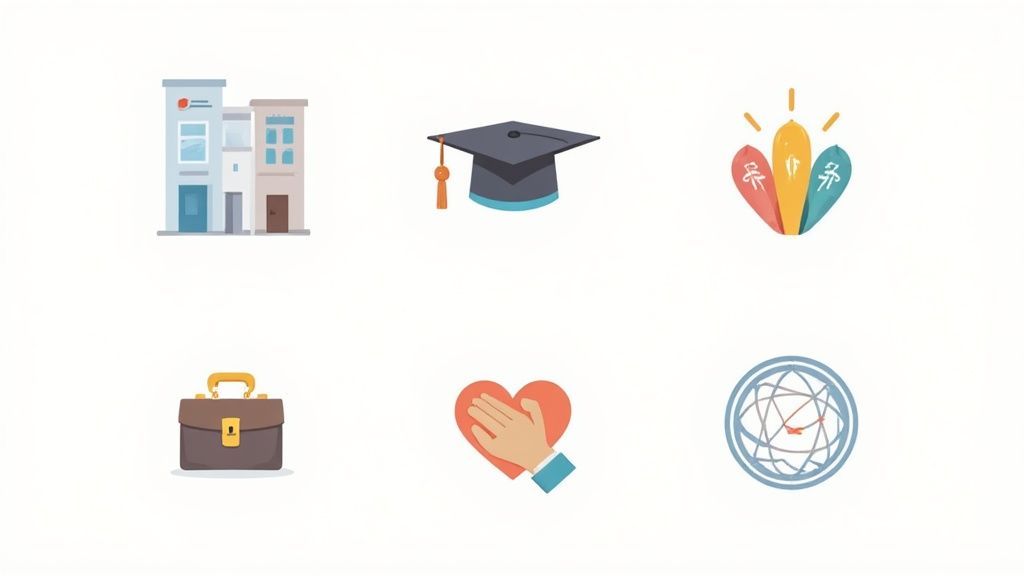
This model puts world-class instruction within reach for people who can't just pack up and move to a university town. It's education that fits around life, not the other way around.
Key Insight: While an LMS like Coursera delivers the e-learning content, a training management system like Coursebricks is essential for organizations that need to manage the logistics of live or hybrid training events, such as workshops and seminars.
It's not just for degrees, either. Professional associations rely on these platforms to offer continuing education credits. An engineer in one country can easily take a required certification course from an association in another, finishing it over a few weekends without ever booking a flight. This has become the standard for keeping professional licenses current in dozens of industries.
Choosing the Right Asynchronous Learning Platform
Picking the right asynchronous learning platform can feel like a huge decision, but it doesn’t have to be a shot in the dark. With a clear, systematic approach, you can find a tool that actually fits your goals, saving you a world of frustration later on. The trick is to look past the flashy features and really zero in on what matters for your learners and your administrators.
First and foremost, the platform has to be easy to use. If learners struggle to find their courses or figure out where they left off, their motivation will tank. On the flip side, administrators need a simple, straightforward backend to upload content, check on progress, and manage users—no software engineering degree required.
Evaluating Key Technical and Strategic Factors
Beyond pure usability, you have to think about how this new tool will play with your existing software. Does it connect smoothly with your Human Resources Information System (HRIS) for managing user accounts? How about your Customer Relationship Management (CRM) for tracking customer training? Getting these integrations right from the start is a massive time-saver and prevents annoying data bottlenecks.
Scalability is another big one. The platform you choose today needs to be able to handle your growth tomorrow. You should ask potential vendors how their system performs when you add hundreds of new users or a dozen new courses. A platform that can scale with you means you won't have to go through a painful migration process right when your training programs are hitting their stride.
Pro Tip: Before you lock into a long-term contract, always run a small pilot program. Getting honest feedback from a handful of real users is infinitely more valuable than any sales demo you'll see.
Here's a quick checklist to guide your evaluation process. Think of it as a scorecard to help you compare different platforms objectively.
Platform Selection Checklist
| Evaluation Criteria | Key Questions to Ask | Importance (High/Medium/Low) |
|---|---|---|
| User Experience (UX) | Is the interface intuitive for learners? Can admins easily manage content and users? | High |
| Integration Capabilities | Does it connect with our essential tools (HRIS, CRM, SSO)? Are the APIs well-documented? | High |
| Scalability | Can the platform support a significant increase in users and courses without performance issues? | High |
| Analytics & Reporting | Does it provide detailed, actionable data on learner progress and course effectiveness? | Medium |
| Content Authoring Tools | Does it have built-in tools for creating content, or does it support SCORM/xAPI imports? | Medium |
| Support & Training | What level of customer support is offered? Is there training available for our team? | Medium |
| Pricing & ROI | Is the pricing model transparent? Does the cost align with the value it will bring? | High |
| Security & Compliance | Does the platform meet our industry's data security and privacy standards (e.g., GDPR, CCPA)? | High |
This checklist isn't exhaustive, but it covers the core areas you need to investigate to make a confident, well-informed decision.
Distinguishing Between an LMS and a TMS
As you explore your options, you'll run into two common acronyms: LMS and TMS. It's absolutely critical to understand the difference.
A Learning Management System (LMS) is your go-to for delivering and tracking on-demand, self-paced e-learning. Think of it as the digital library where you host your pre-recorded videos, interactive modules, and quizzes.
On the other hand, a Training Management System (TMS), like Coursebricks, is purpose-built to manage the logistics of instructor-led training (ILT). Whether your events are in-person, virtual, or a mix of both, a TMS handles all the scheduling, registrations, resource management, and even the financials.
Why does this matter so much? Because choosing the wrong tool for the job leads to clunky workarounds and a system that just doesn't meet your needs. If your focus is self-paced online courses, you need an LMS. But if you're juggling the complex administration of live training sessions, a TMS is the clear winner. To see what's out there, check out our guide on the best learning management systems for small business. Nailing this distinction ensures you invest in a solution that solves your actual problems.
Looking Ahead: Building a More Flexible Future for Learning
It’s clear that asynchronous learning platforms aren't just a fleeting trend. They signal a real change in how we approach education and professional growth. The magic is in a few key advantages that completely reframe how we learn, ultimately helping to build a workforce that can adapt and respond to whatever comes next.
The most obvious win is flexibility. People can dive into learning materials whenever they feel most alert and ready, weaving education into their own unique schedules instead of the other way around. This naturally opens the door to massive scalability, letting companies train hundreds or even thousands of people with one program, all without the headache of scheduling conflicts. And when learners set their own pace, they're really in the driver's seat of their own development.
The Next Wave of Learning
And this is just the beginning. The evolution of these platforms is picking up speed. We're seeing exciting developments, like AI-powered learning paths that can suggest the perfect next piece of content based on someone's progress and career aspirations. This kind of intelligence will make learning not just more personal, but far more effective.
Key Takeaway: The goal is shifting from simply delivering training to fostering a true culture of continuous learning. Asynchronous platforms are the bedrock for building this adaptable and skilled future.
In the end, the best platform is the one that fits what you’re trying to do. While a Learning Management System (LMS) is fantastic for delivering asynchronous courses, something like a Training Management System (TMS), such as Coursebricks, is built from the ground up to handle the logistics of instructor-led training. Taking a hard look at your organization's training style is the first, most important step in picking the right tool for the job.
Frequently Asked Questions
Diving into asynchronous learning platforms can spark a few questions. Let's tackle some of the most common ones to give you a clearer picture and help you find the right fit for your training goals.
What Is the Main Difference Between an LMS and a TMS?
The simplest way to think about it is this: one is a library, the other is an event planner.
A Learning Management System (LMS) is the digital library. It’s built to host and track self-paced e-learning content like video courses and interactive modules. Learners go there, "check out" a course, and complete it on their own time.
A Training Management System (TMS), like Coursebricks, is the event planner. It's designed to manage the nitty-gritty operational side of instructor-led training (ILT). This includes all the complex logistics—scheduling classes, handling registrations, allocating resources, and managing the financials for live, virtual, or hybrid sessions. So, an LMS holds the content, while a TMS manages the actual training event.
How Do You Keep Learners Engaged in an Asynchronous Environment?
Engagement isn't automatic; you have to build it into the experience. The trick is to shift from passive content consumption to active participation. Think of it as turning a lecture into a workshop.
To keep learners motivated and logged in, the best programs mix in a few key ingredients:
- Interactive Elements: Things like quizzes, hands-on simulations, and clickable scenarios that pull the learner into the material.
- Community Building: Discussion forums are a great start. They give people a place to ask questions, share what they’ve learned, and connect with others on the same path.
- Gamification: A little friendly competition goes a long way. Badges, points, and leaderboards help celebrate progress and make learning feel like an achievement.
Ultimately, a clear roadmap with achievable milestones helps people see how far they've come, which is a huge motivator in itself.
Key Insight: When you match the training method to the goal, the results speak for themselves. A study from City Square Associates found that 87% of asynchronous learners picked up new skills they could immediately use in their jobs, proving just how effective this format can be when done right.
Are Asynchronous Platforms Good for All Types of Training?
Not quite. They're fantastic for transferring knowledge and teaching concepts. Think of things like compliance training, software tutorials, or onboarding new hires on company history. Anytime a learner needs to absorb information at their own speed, asynchronous platforms are a perfect fit.
However, they’re less suited for skills that demand real-time practice and immediate human feedback. For something like mastering complex negotiation tactics, leadership coaching, or practicing a delicate hands-on procedure, you’ll get better results with a live synchronous session or a blended approach. The golden rule is to always pick the tool that best serves the skill you're trying to build.
Ready to explore Coursebricks?
Manage training programs, automate emails, and generate detailed reports — all in one place.




